Breaking into a secure bank facility often requires a meticulous plan, the right personnel and the smartest of tools.
Trying to sneak through Massimiliano Allegri’s Juventus might be just as hard — an organised defensive unit with special-ops operative Gleison Bremer leading the way is as close as football gets to an unbreakable vault.
The men looking to break in? Simone Inzaghi’s Inter Milan.
Allegri recently compared the title race to a game of cops and robbers. “The robbers get away and the cops run after them,” he said when Inzaghi’s side were ahead in the table.
Yet Inter’s 1-0 victory against Juventus at San Siro was anything but a robbery. It might have looked like one as Inter’s attack tried to find a way through Juventus’ defensive block throughout the first half but their triumph was a deserved win.
Juventus’ organised 5-3-2 without the ball is difficult to break down for most Serie A sides but, just as with bank robbers, Inter have numerous tools and solutions.
Normally, when a team playing with a back three, wing-backs, a midfield three, and a striking duo — as Inter do — attacks a team defending in a 5-3-2, the space is on the outside of the midfield because the defensive wing-backs are pinned by their counterparts, and the midfielders are focusing on marking the attacking team’s midfield three.
Here, Juventus’ defensive block is shifting towards Inter’s left side, where defender Alessandro Bastoni has the ball, meaning that the space is on the other side of Juventus’ midfield three. In this situation, the free man is Inter’s right centre-back, Benjamin Pavard.
The mirrored scenario sees Bastoni, Inter’s left centre-back, as the free player, with Federico Dimarco, Inter’s left wing-back, positioned aggressively near the penalty area to force Juventus’ right wing-back, Andrea Cambiaso, away from the Italy centre-back.

Usually, the stumbling block in this situation is that Juventus’ defensive unit will oscillate from one side to the other to close down the spaces on the side where the ball resides but Inter knew how to use their wide centre-backs effectively.
In the first half, Pavard and Bastoni constantly attacked the space on the outside of Juventus’ midfield. In this example, Pavard’s run with the ball forces Kenan Yildiz to react.
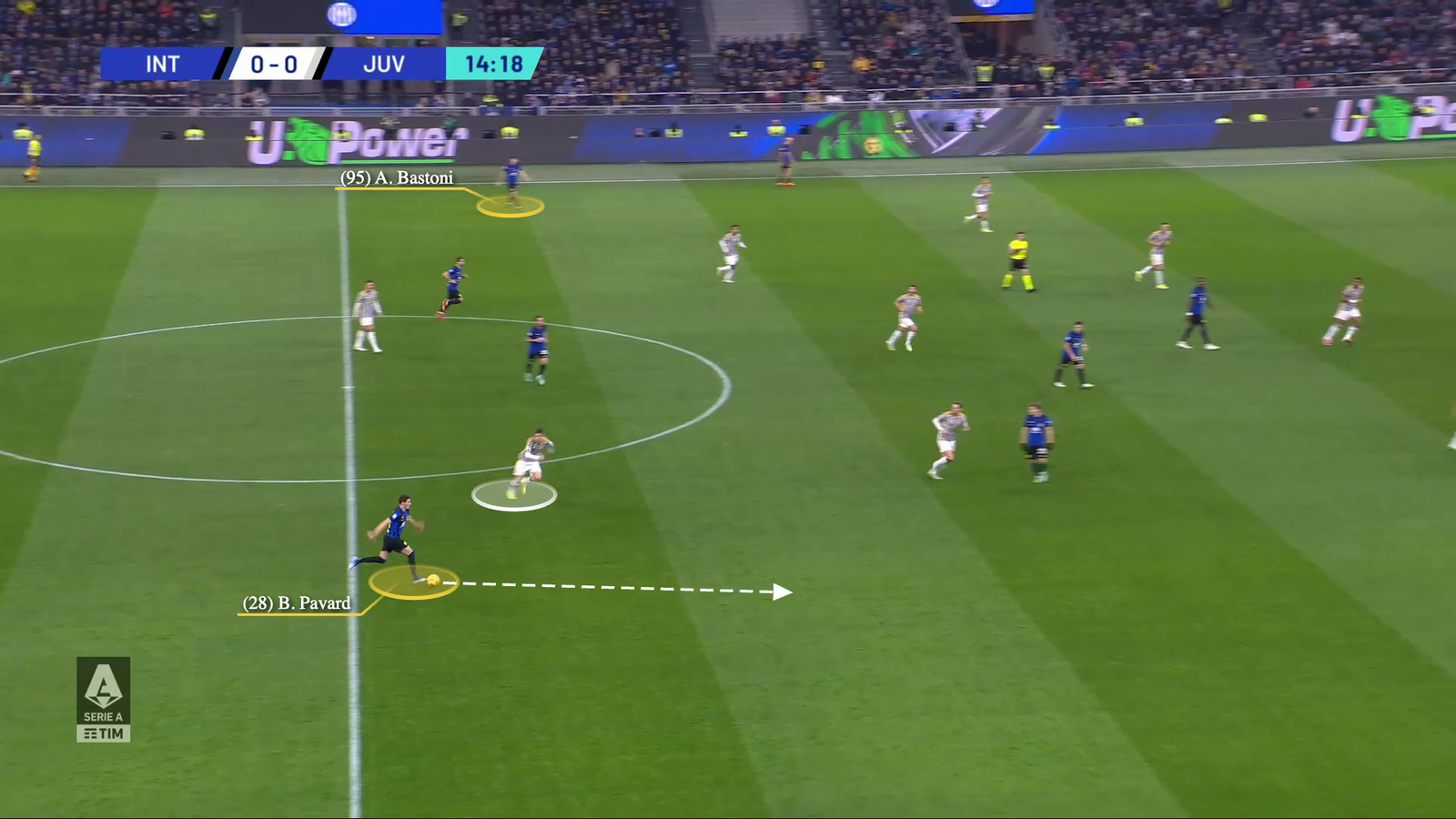
… moving Juventus’ block to the near side. When the attack resets, Bastoni surges forward down the left, with Henrikh Mkhitaryan’s narrow positioning in midfield attracting Weston McKennie and Dimarco pinning Cambiaso.

This allows Bastoni to receive Hakan Calhanoglu’s switch of play under no pressure but the centre-back fails to translate this advantage into a cross.
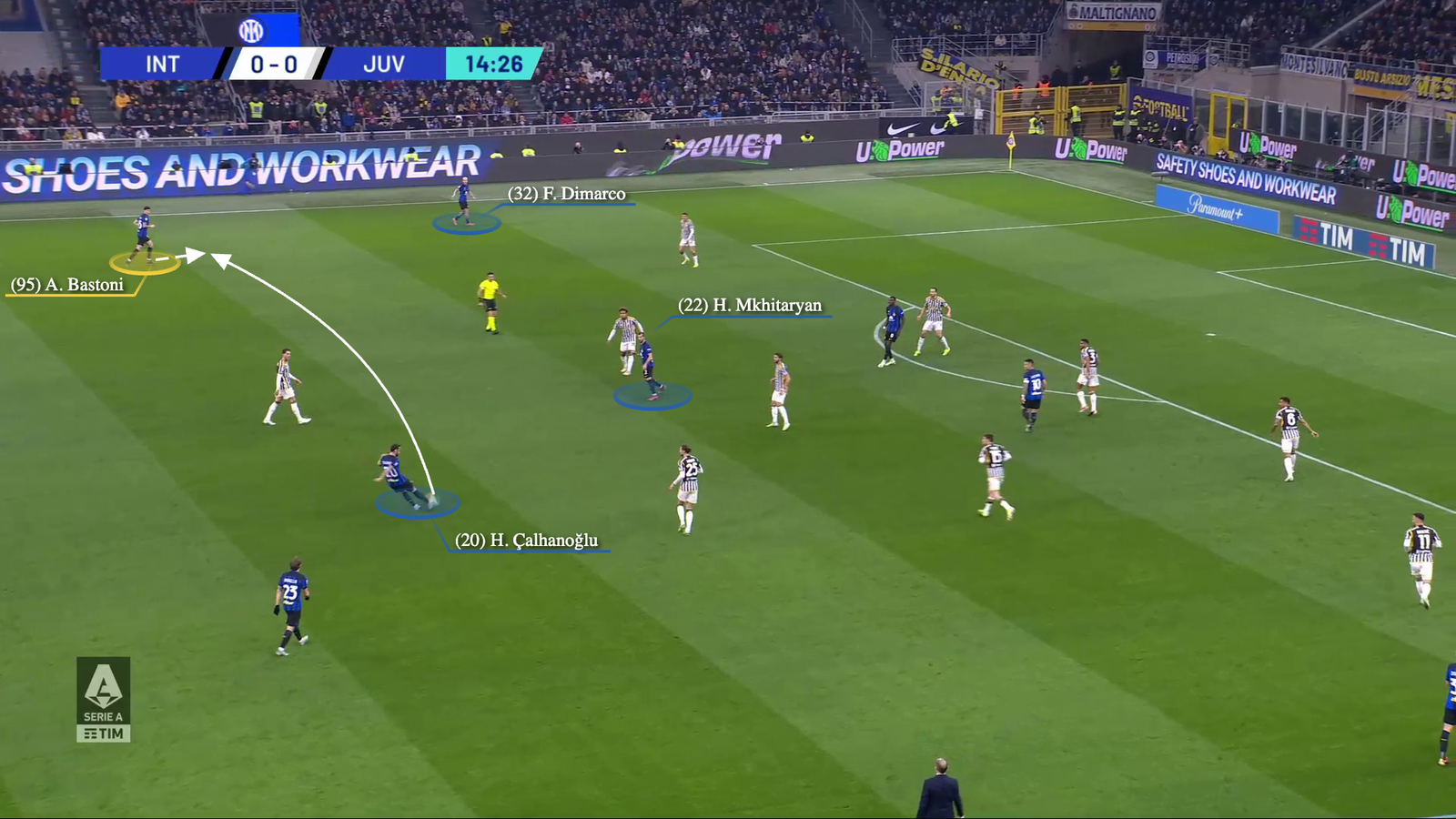
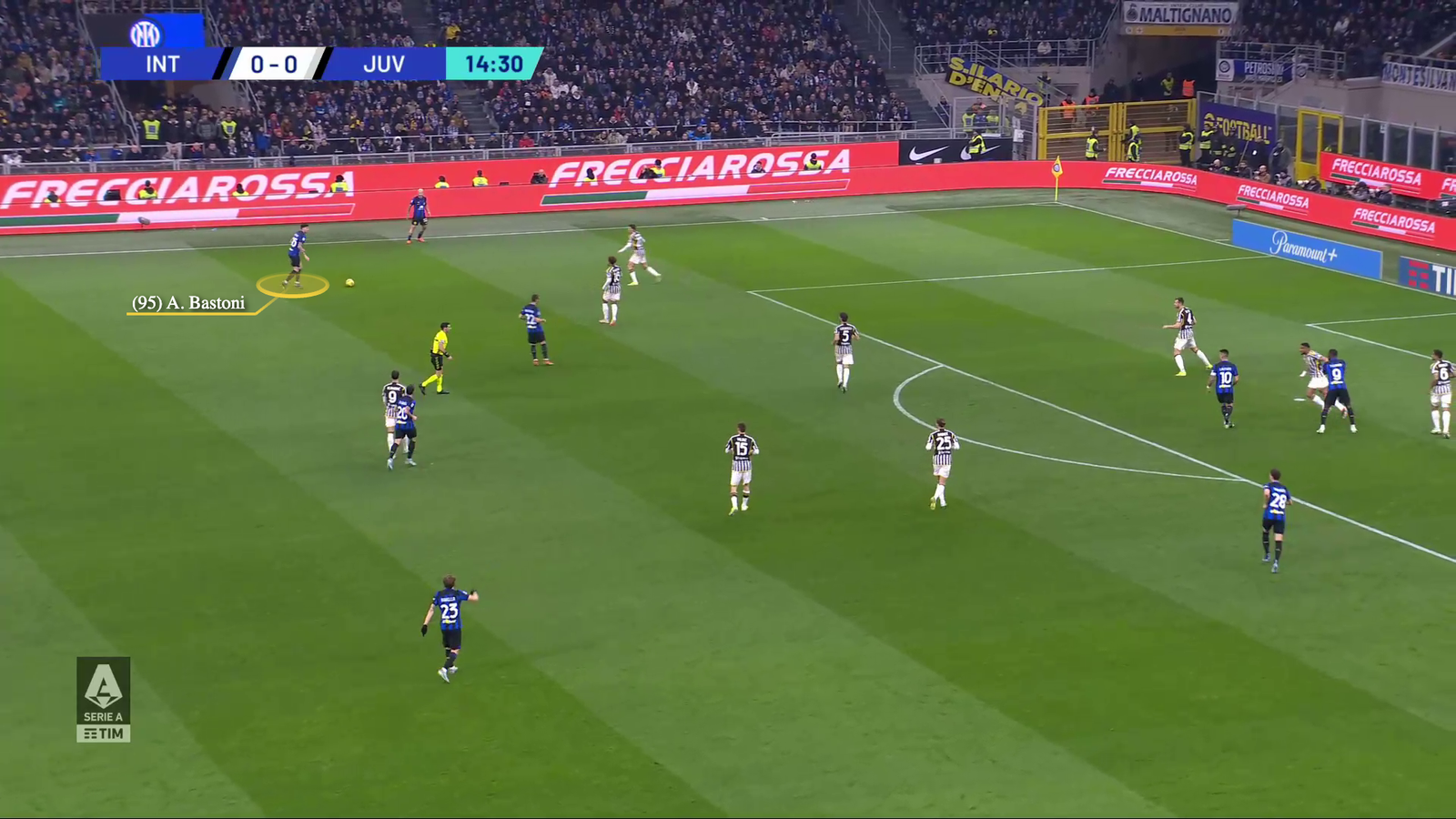
One minute later, Inter created an identical situation.
Starting the attack down the right, Mkhitaryan maintains a narrow position in midfield to force McKennie inside the pitch and Dimacro pushes forward to pin Cambiaso…
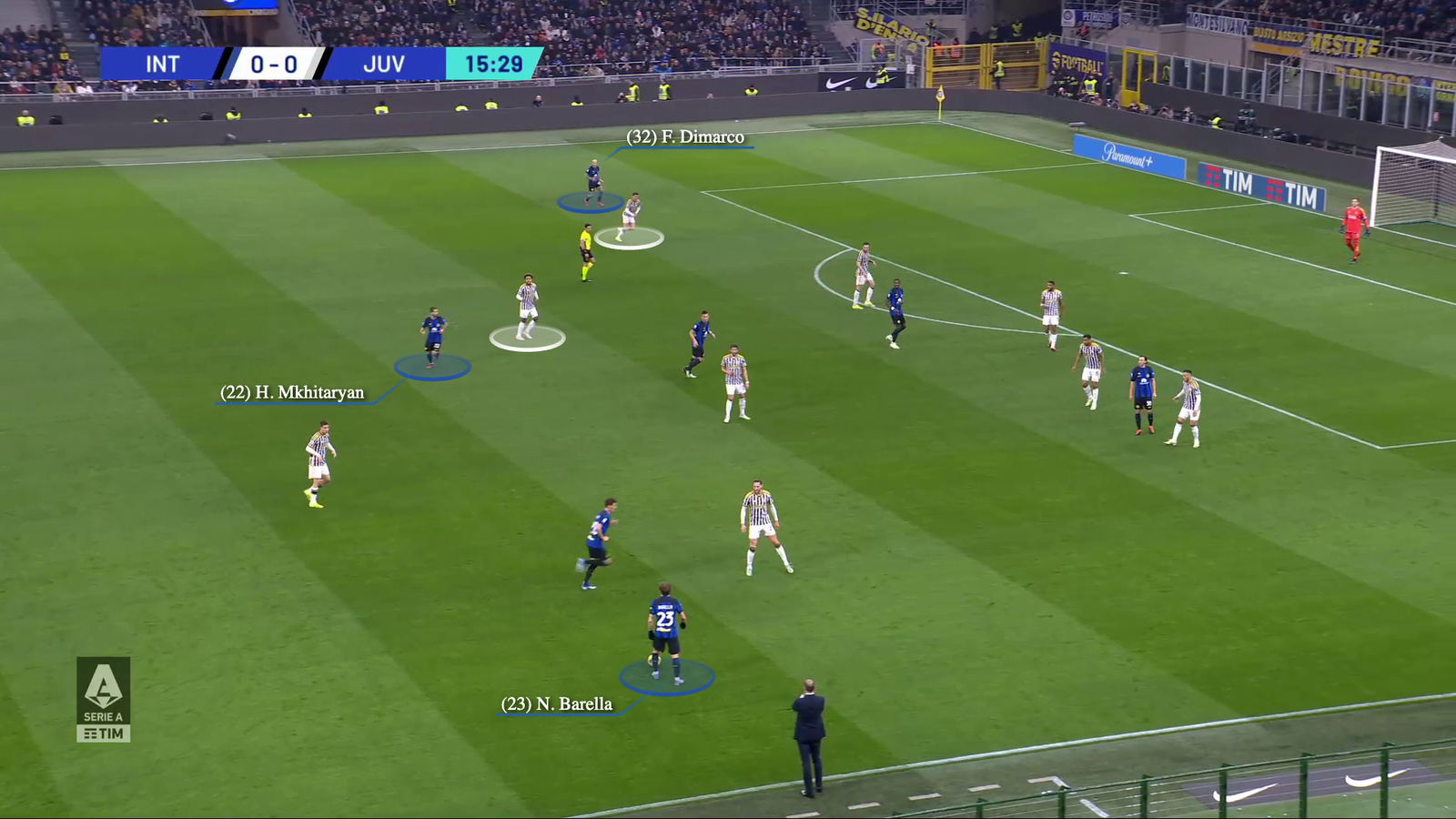
… creating space for Bastoni to attack. Nicolo Barella spots the left centre-back and switches the play towards him.


The time Bastoni has on the ball allows him to cross it into the box towards Matteo Darmian, but Filip Kostic clears.

In another example, Pavard pushes forward to provide a passing option, with Adrien Rabiot focusing on defending the central space in midfield. The positioning of Marcus Thuram and Darmian also means that Juventus’ left wing-back, Kostic, and left centre-back, Danilo, can’t leave their markers and move up towards Pavard…
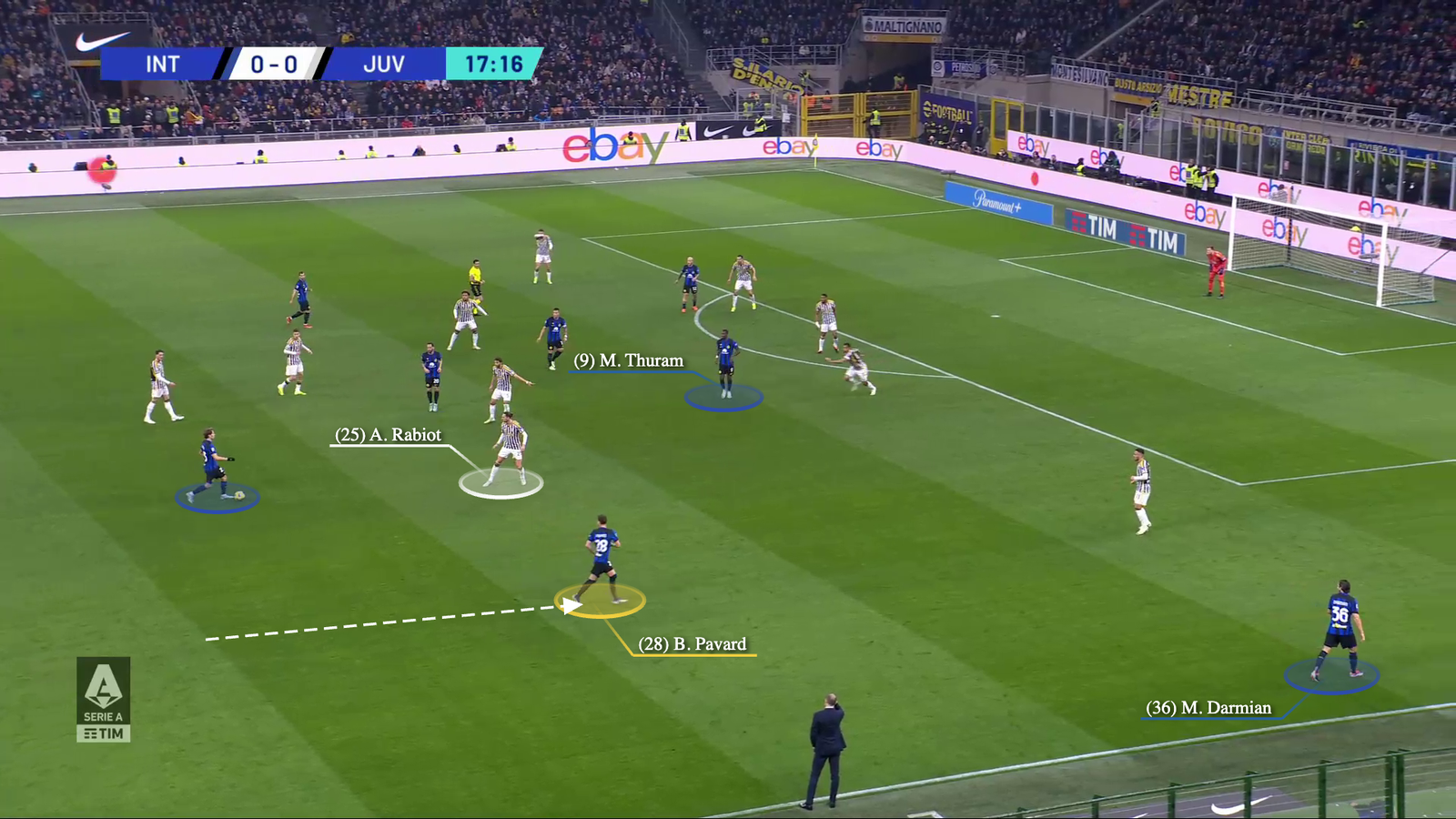
… which allows Barella to play the ball into Pavard’s path…
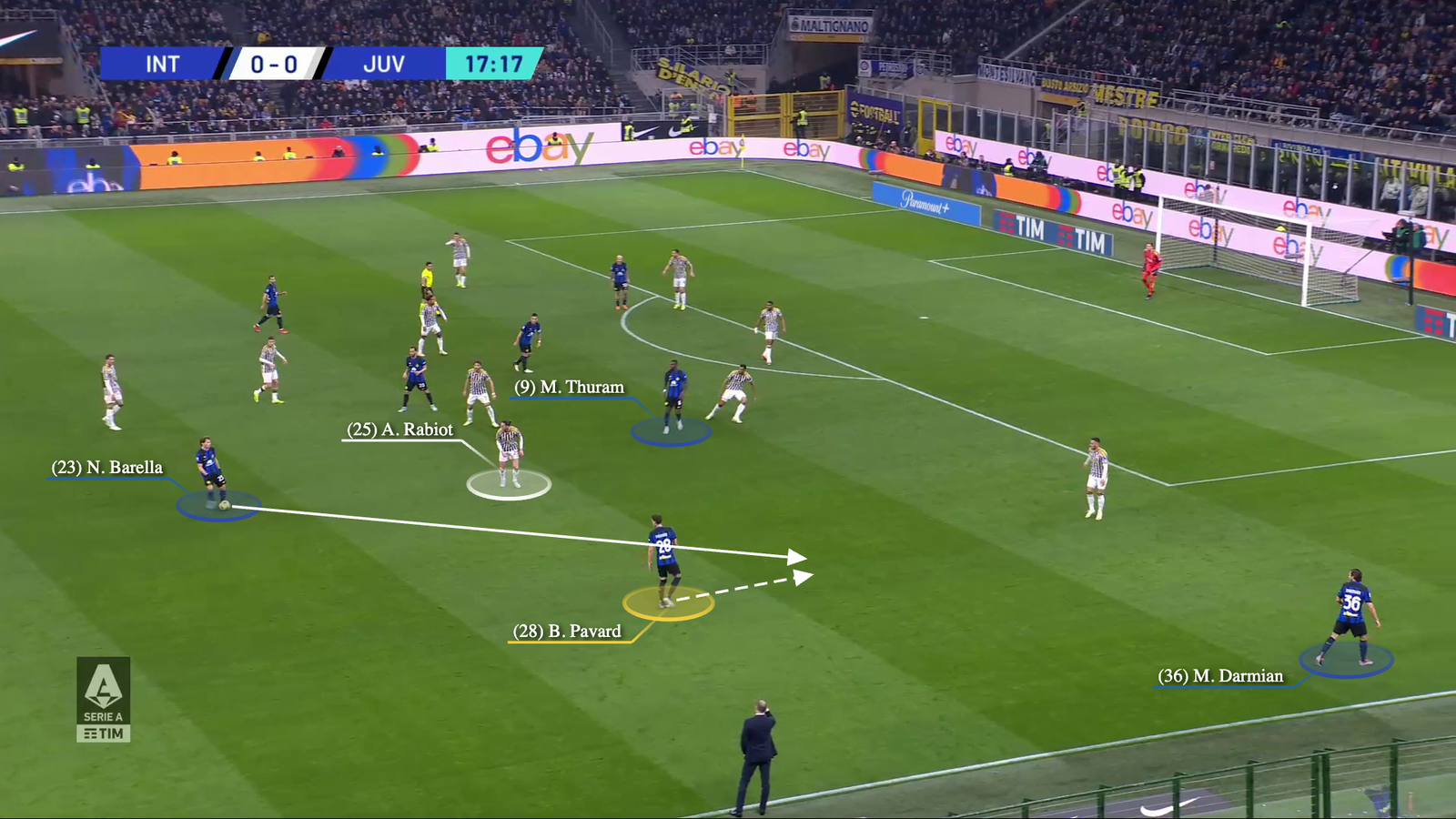
… who has enough time to curl a cross towards Dimarco at the back post…

… but the wing-back fails to connect cleanly with it, only managing to hit the side netting with his shot.

Eventually, the wide centre-backs helped Inter break through Juventus’ stubborn defence.
In the build-up to the only goal in the game, Bastoni’s advanced positioning means that Dimarco has the option to be a threat inside the penalty area. Meanwhile, on the other side, Pavard moves forward as Calhanoglu plays the ball out wide to Darmian…

… who sets it back to the free Pavard, with Barella’s run into space moving the Juventus players away from the right centre-back.
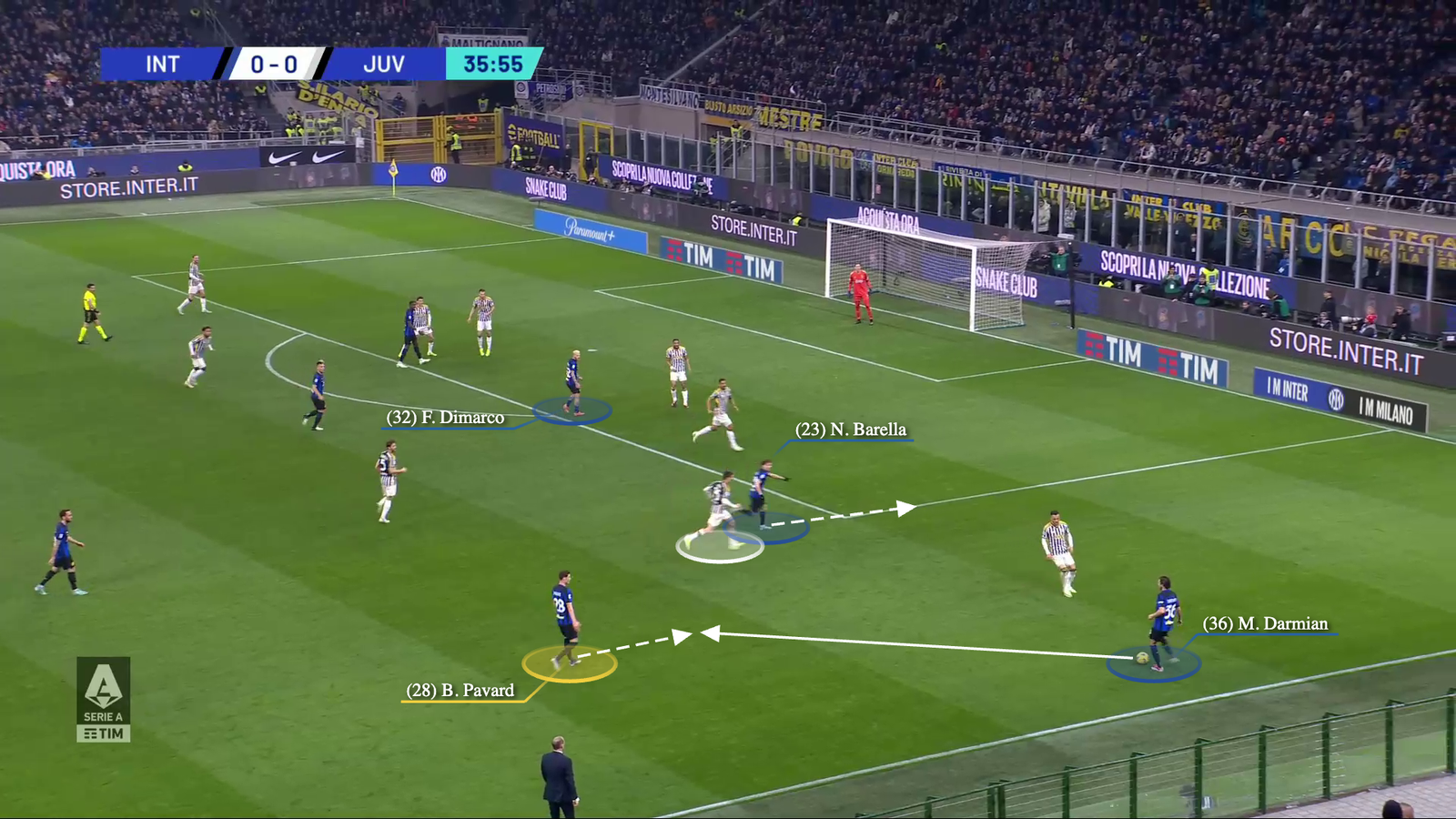
Pavard then plays the ball into Barella before making a run into the box…

… which is not tracked because Danilo is keeping an eye on Dimarco.

Barella then plays the ball back to Pavard…
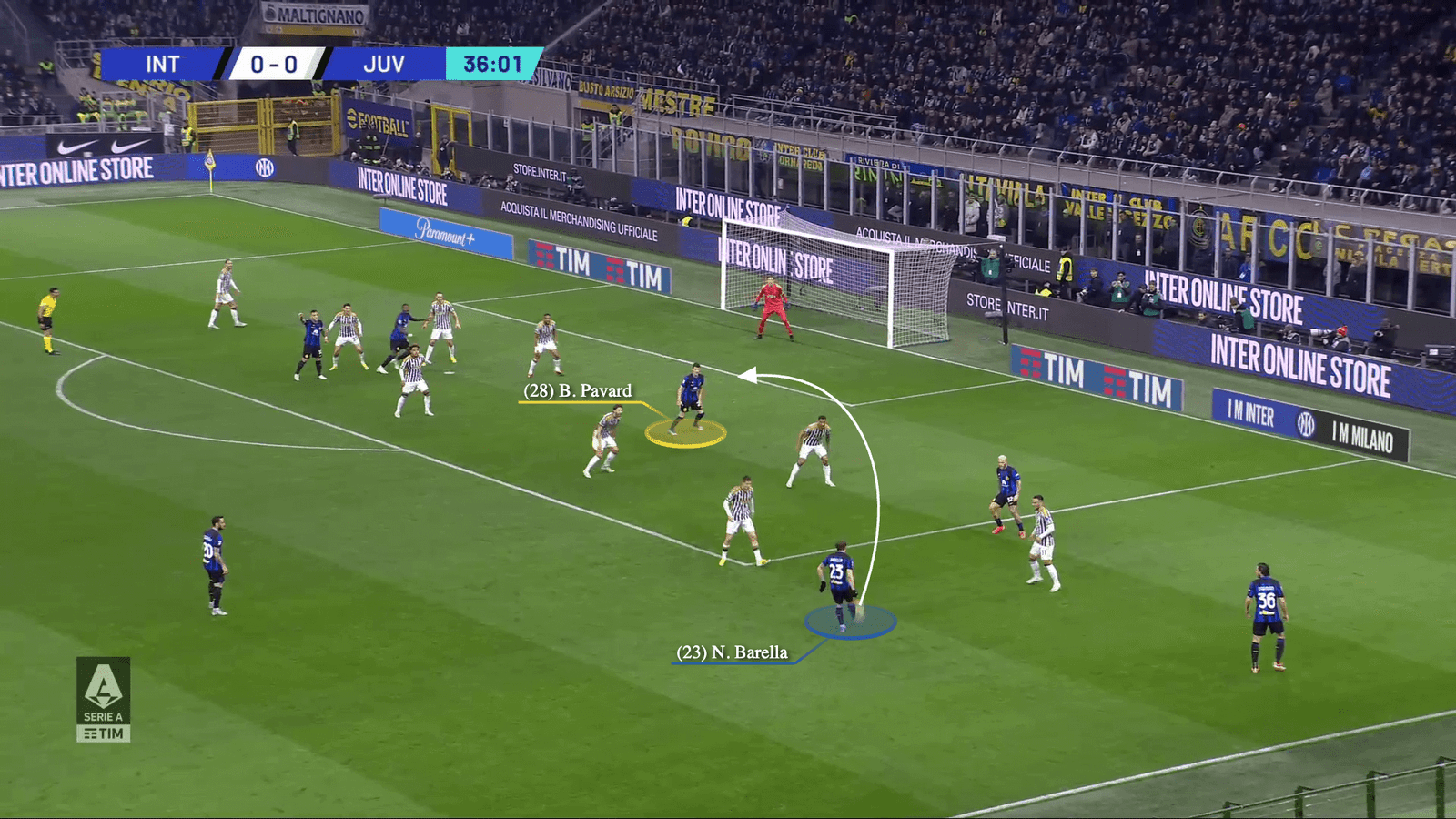
… who, despite missing an audacious acrobatic kick, spooks Bremer…
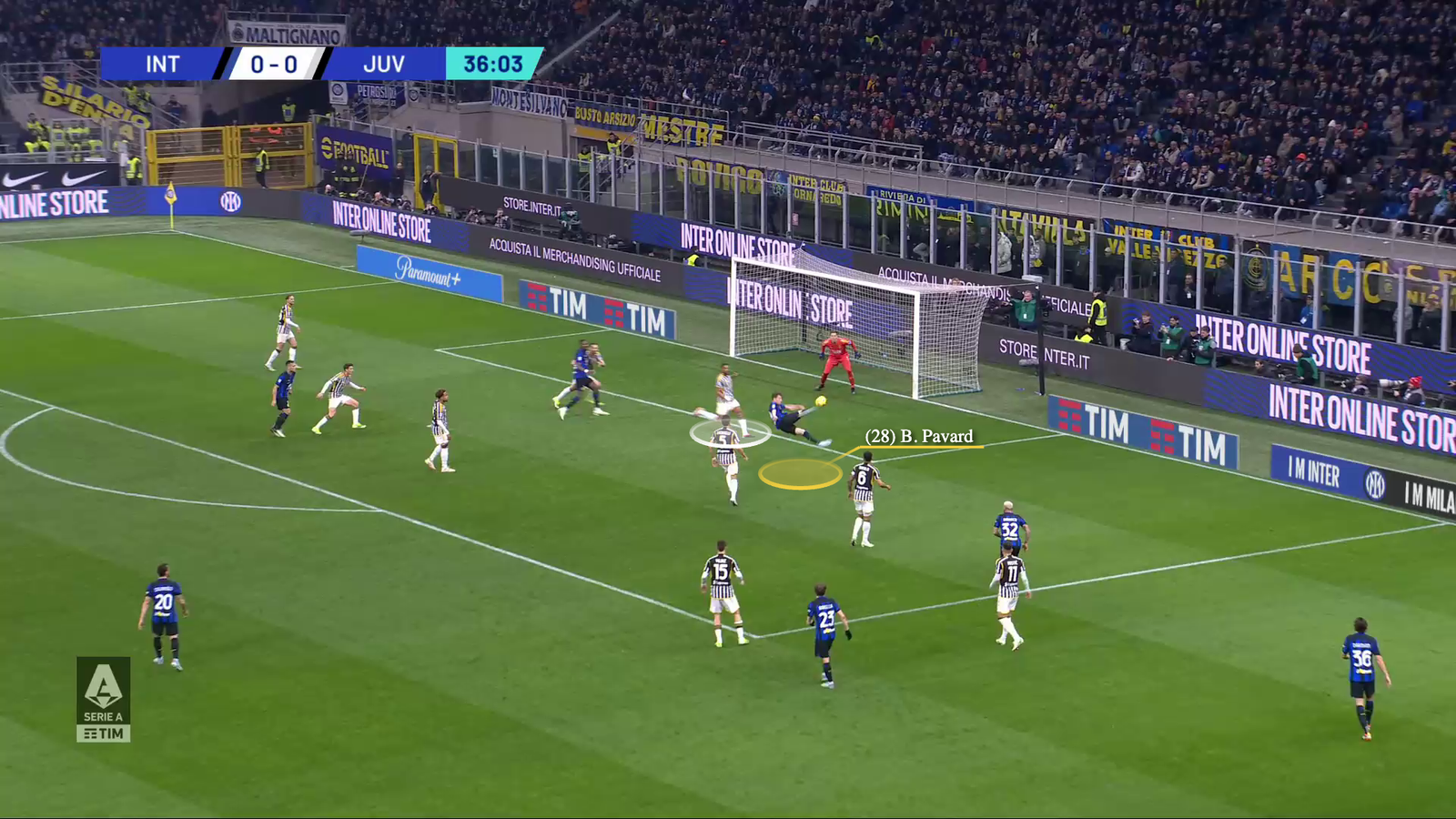
… so the ball drops into the six-yard area, and Thuram’s pressure sees Federico Gatti put the ball into his own net.
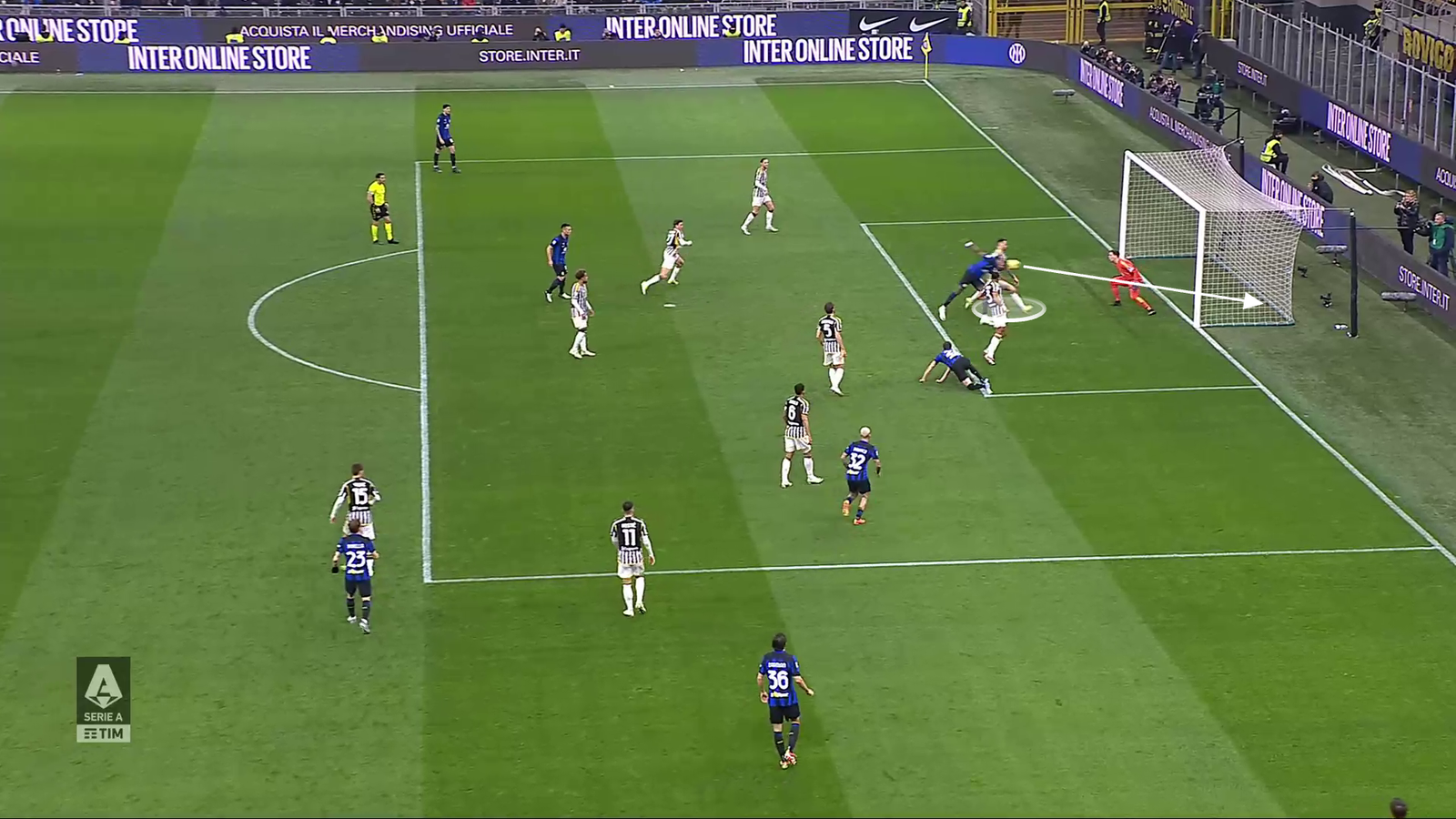
Pavard and Bastoni matched their effectiveness going forward in the first half with their defensive performance across the whole game. They halted Juventus’ counter-attacks, covered for Francesco Acerbi when he moved up to track Juventus striker Dusan Vlahovic and defended their penalty area masterfully in the second half when it was Inter’s turn to drop in order to protect their lead.
This season, the main difference between Juventus and Inter has been the latter’s attacking prowess in open play and their ability to find multiple solutions on the ball. Inzaghi’s side knows how to play without the ball, but they also know how to break down an opponent.
The thing about the game of cops and robbers is that the roles are switched after the round ends. In this title race, it’s important to know how to play both roles — on and off the ball.
Read the full article here


